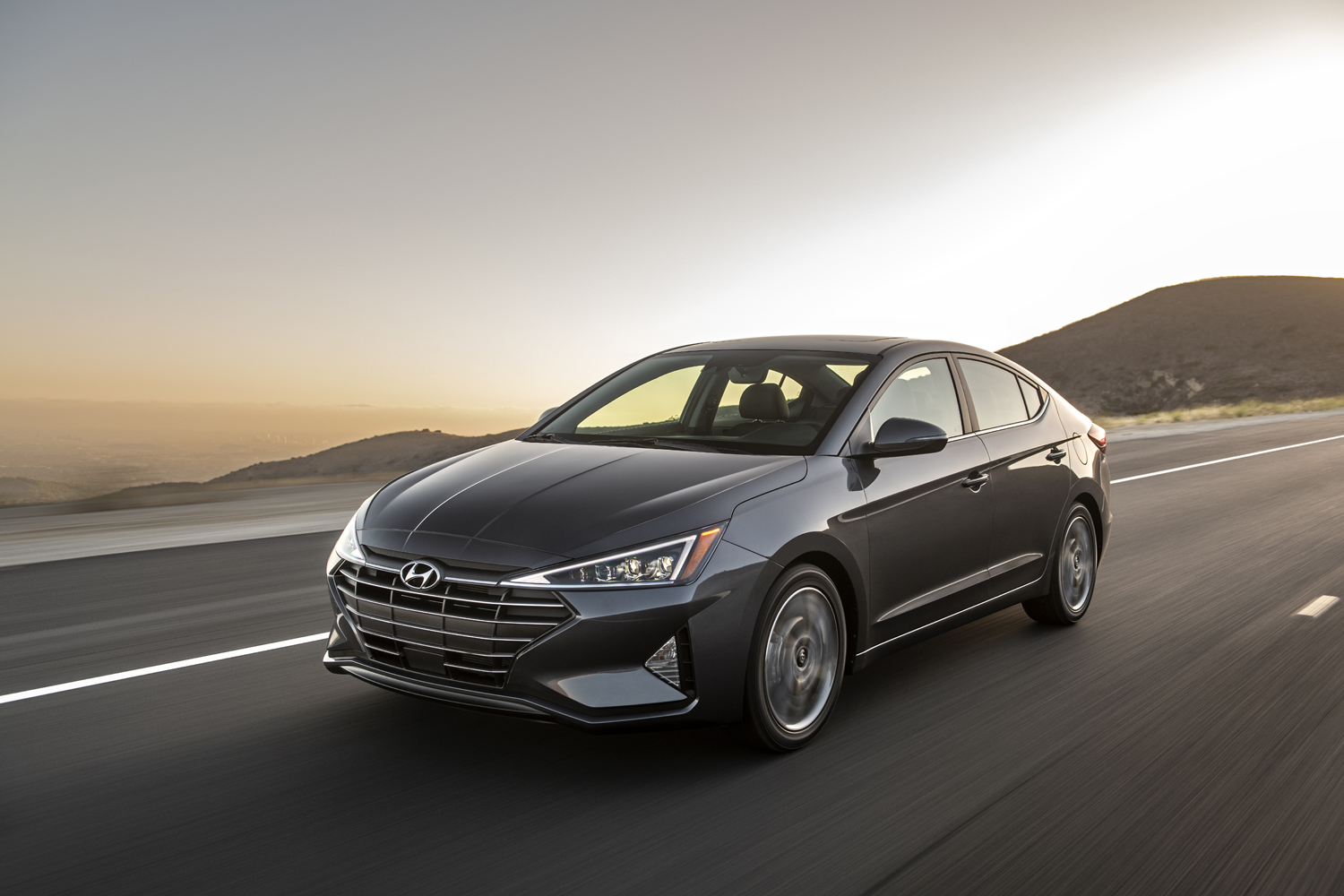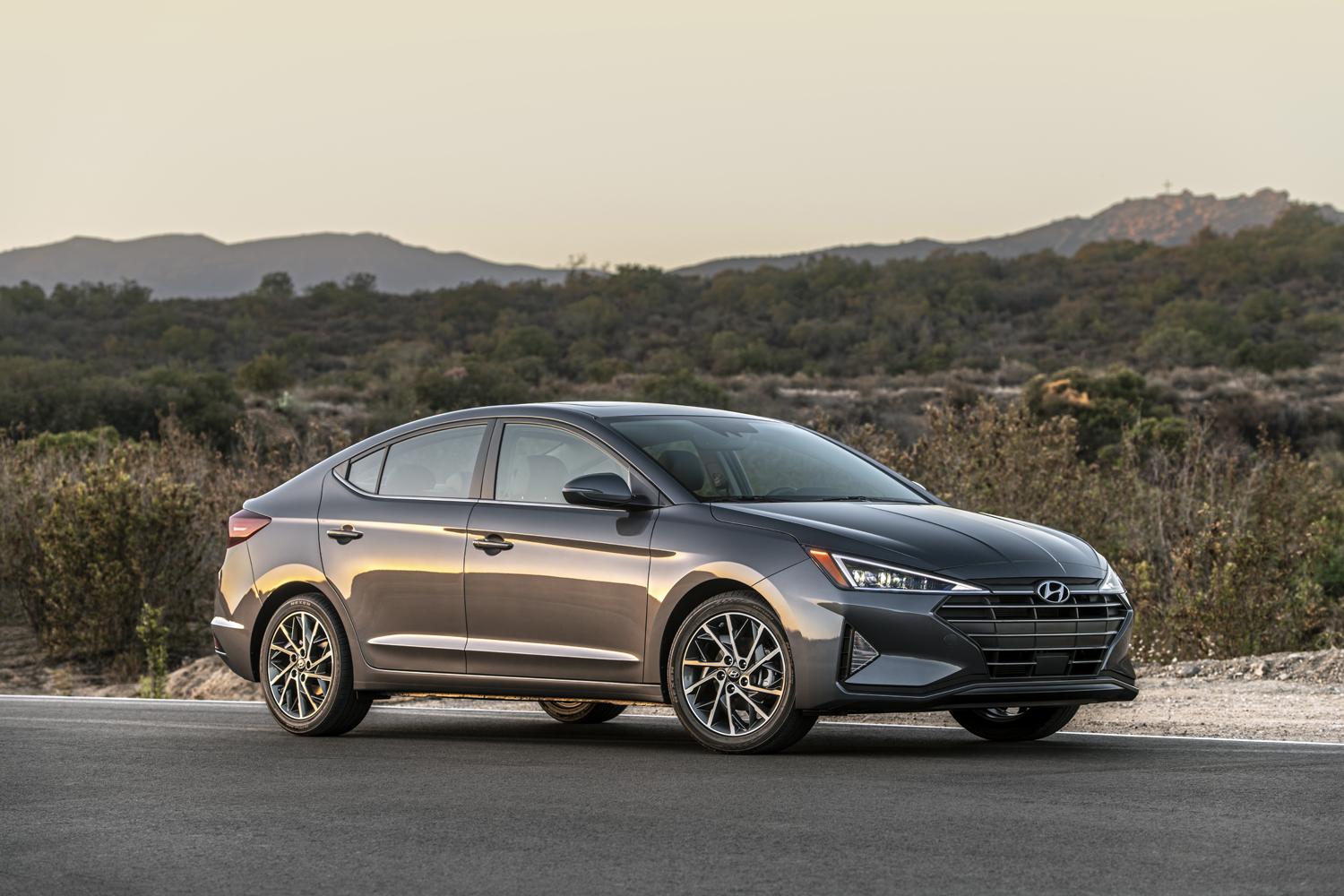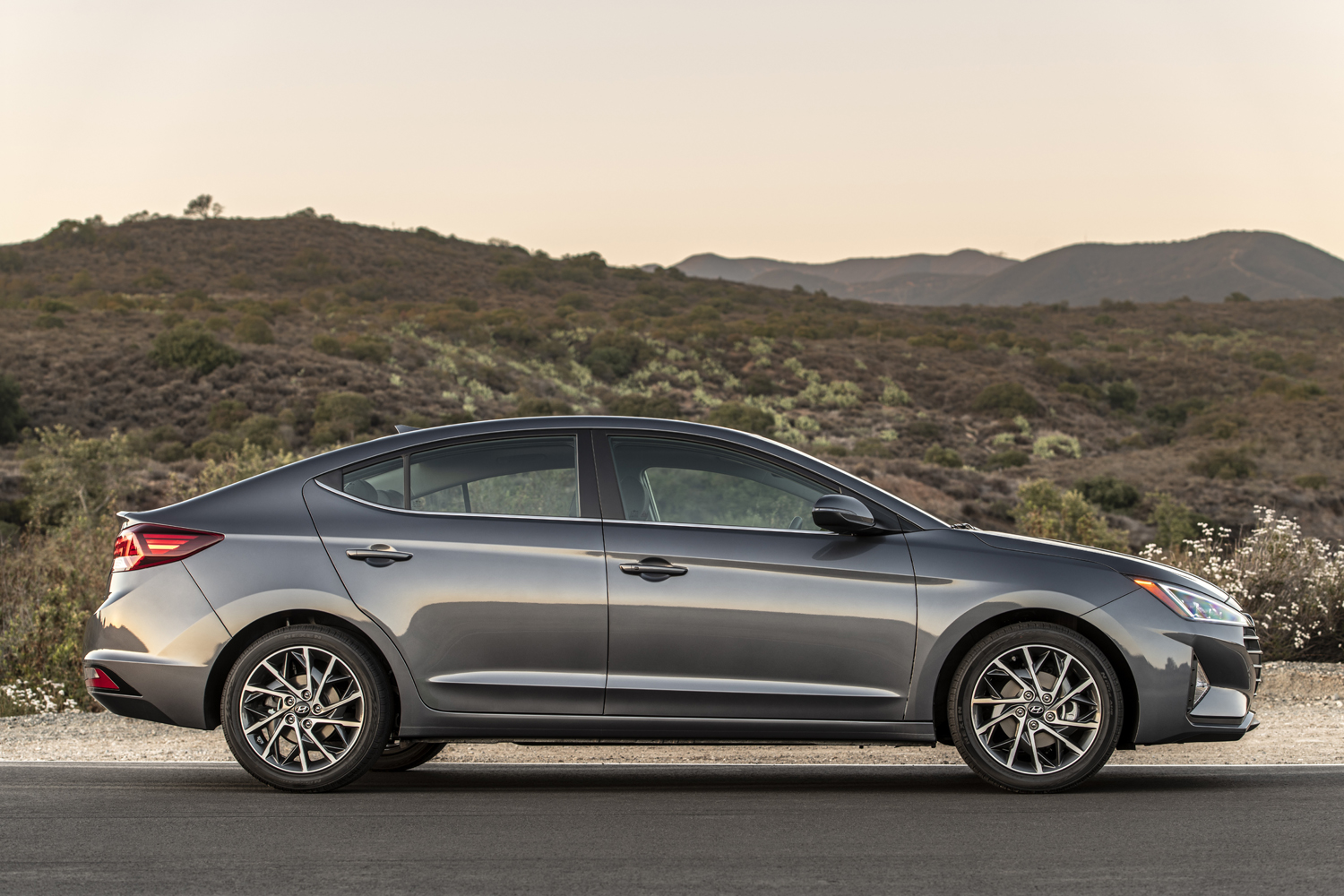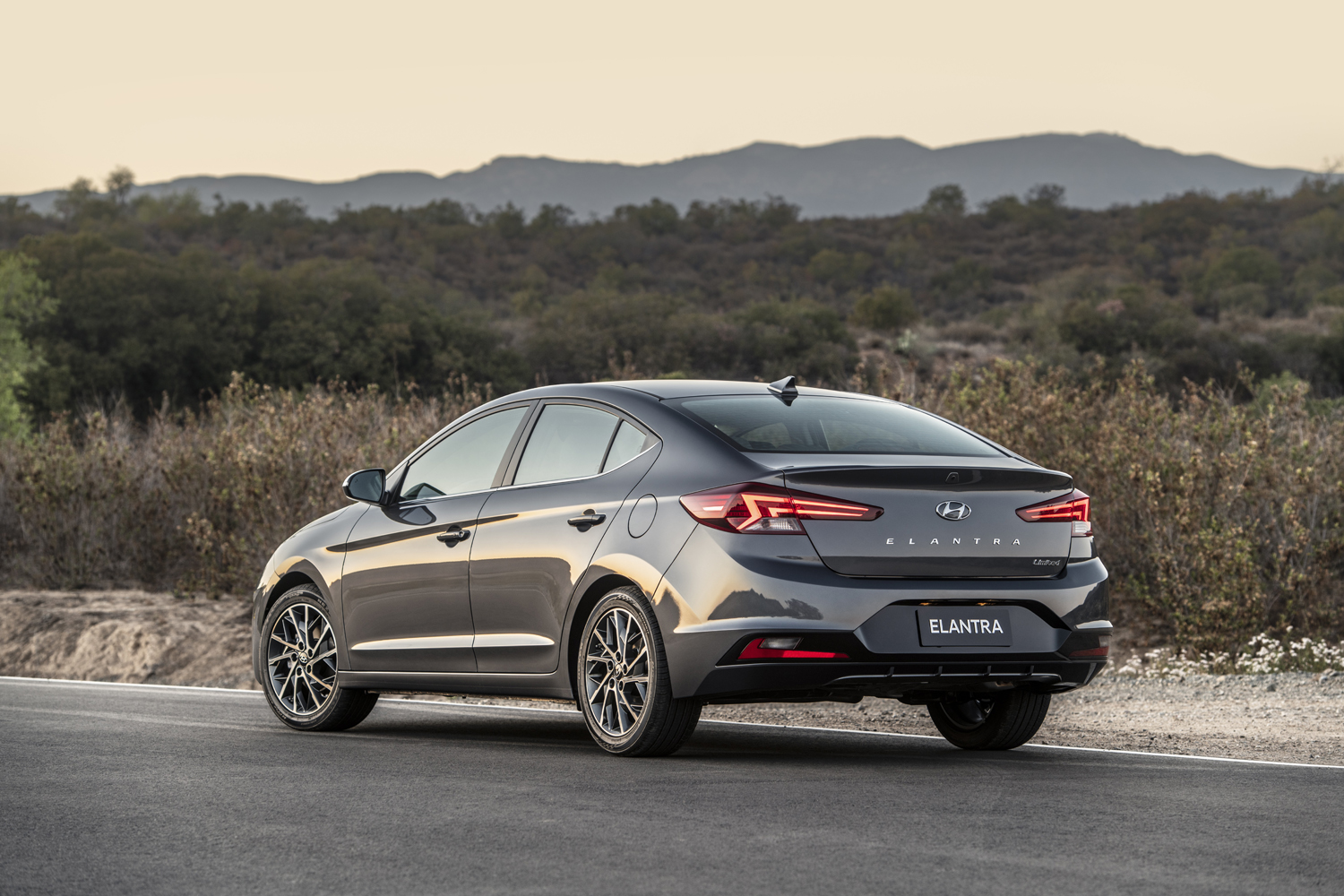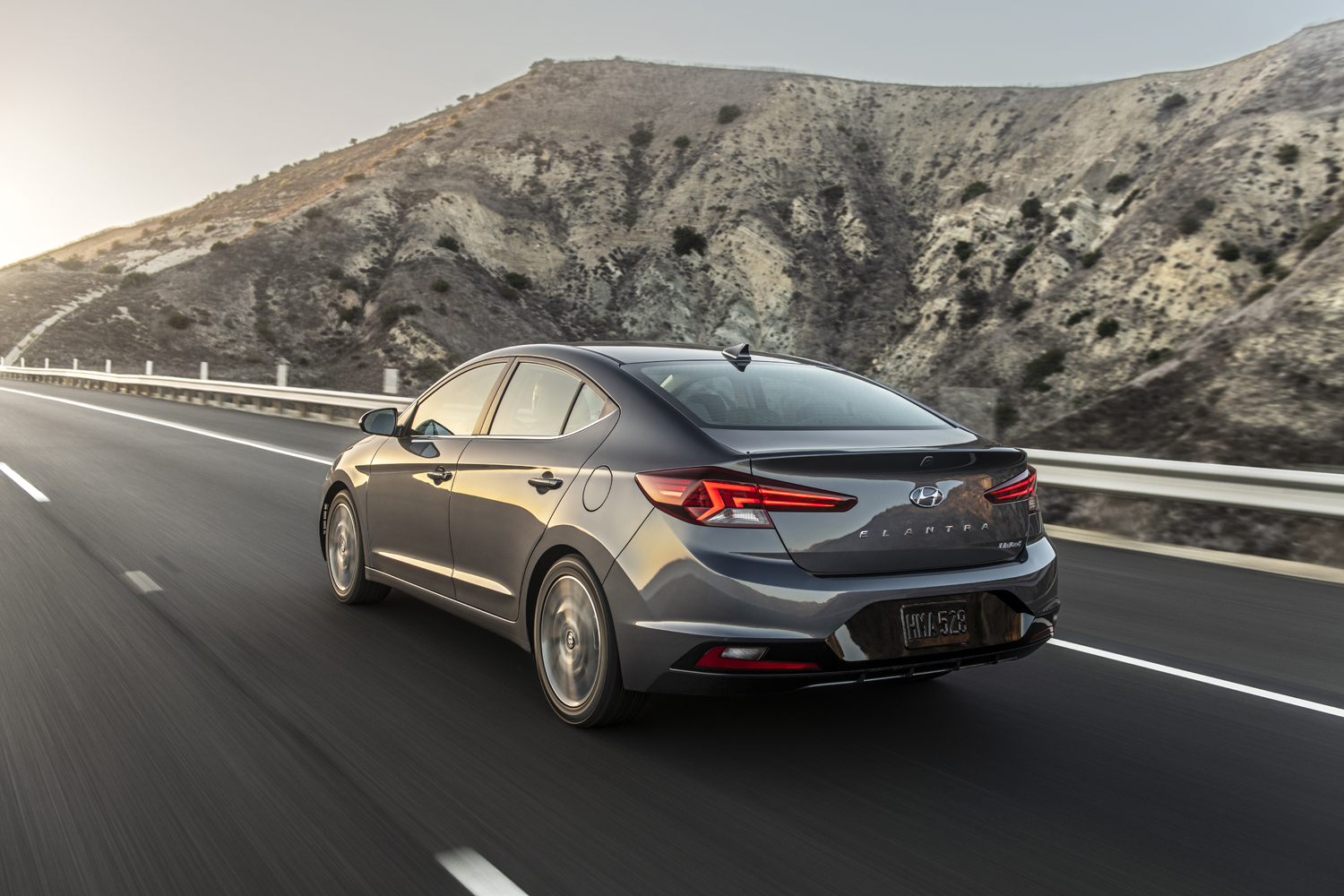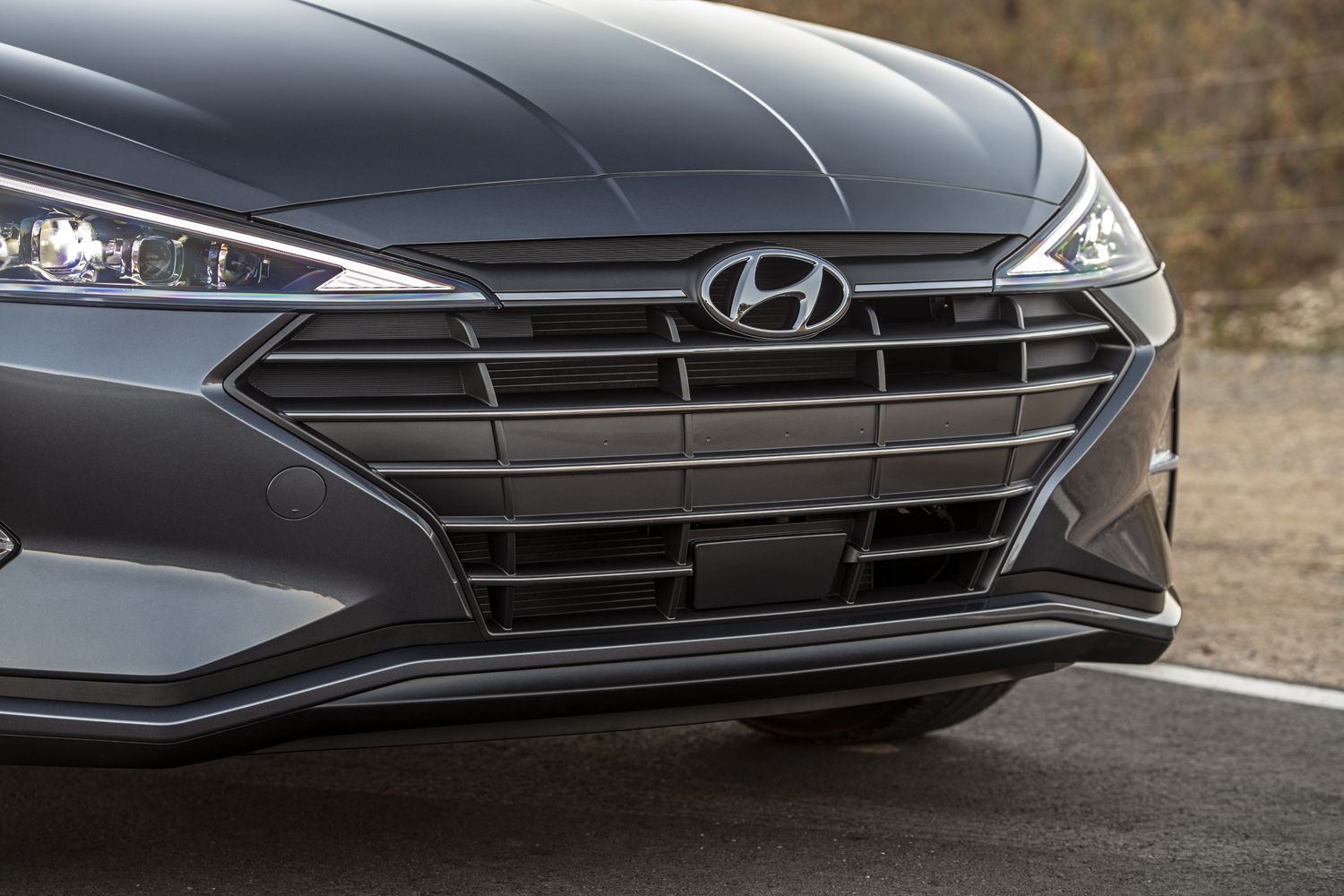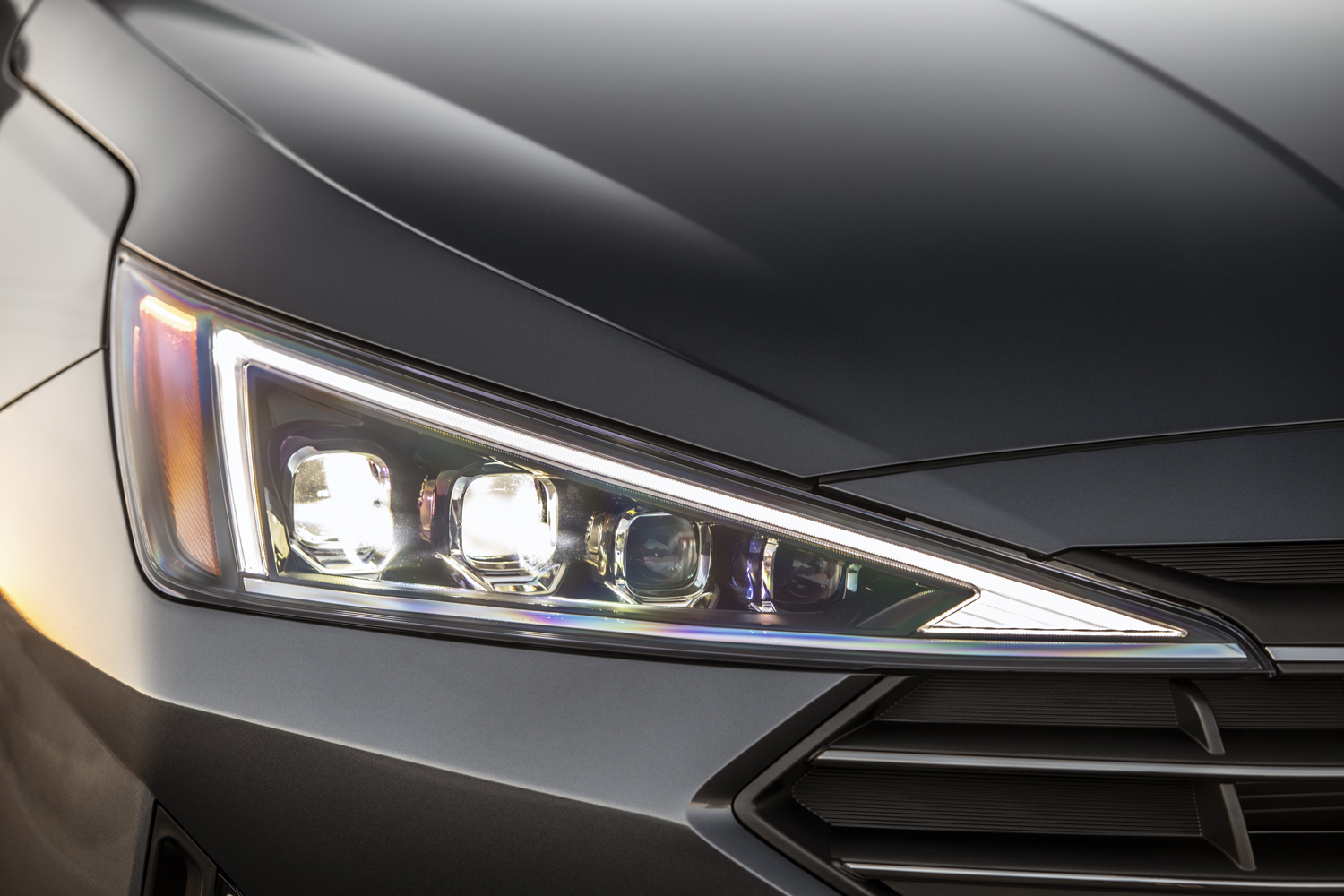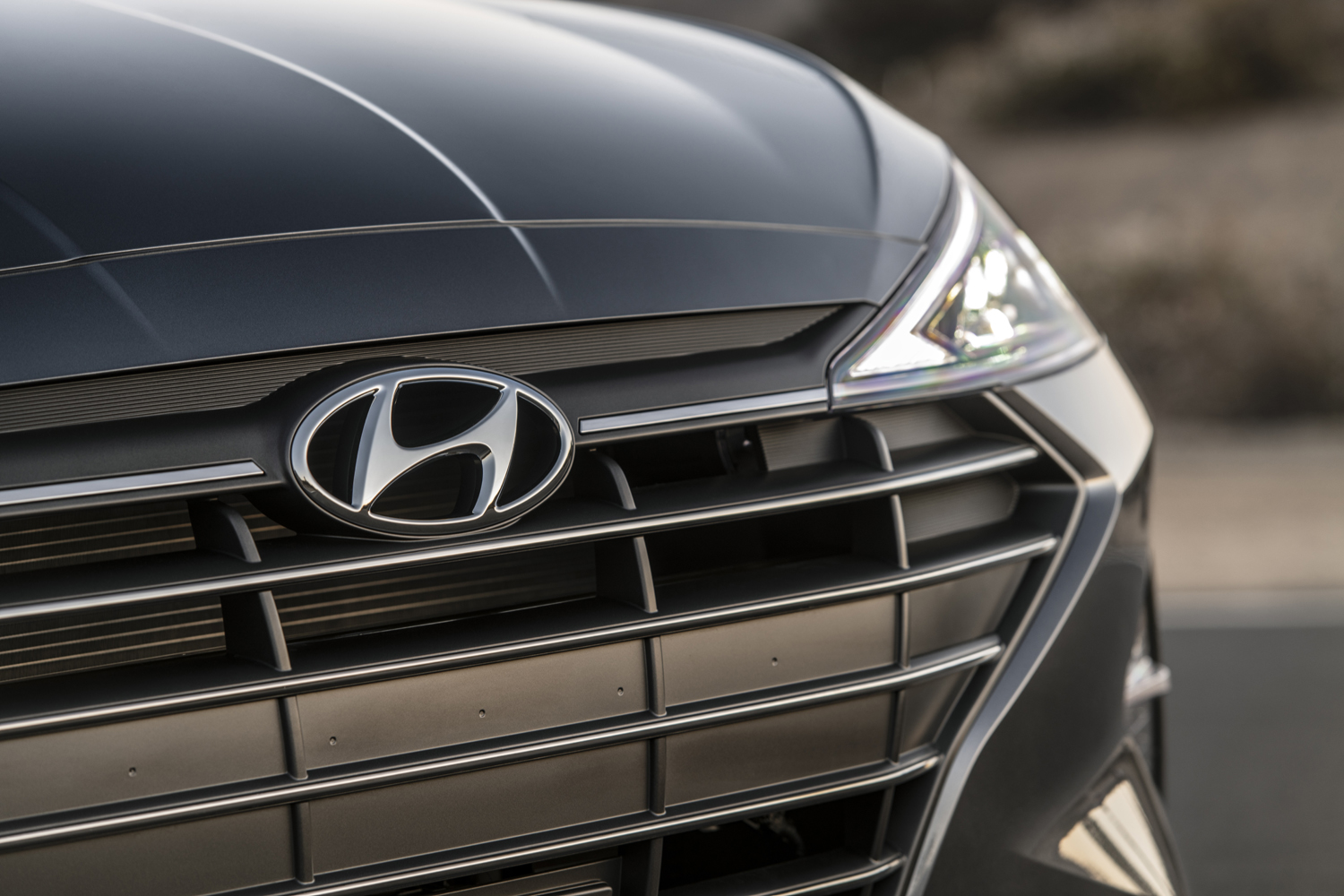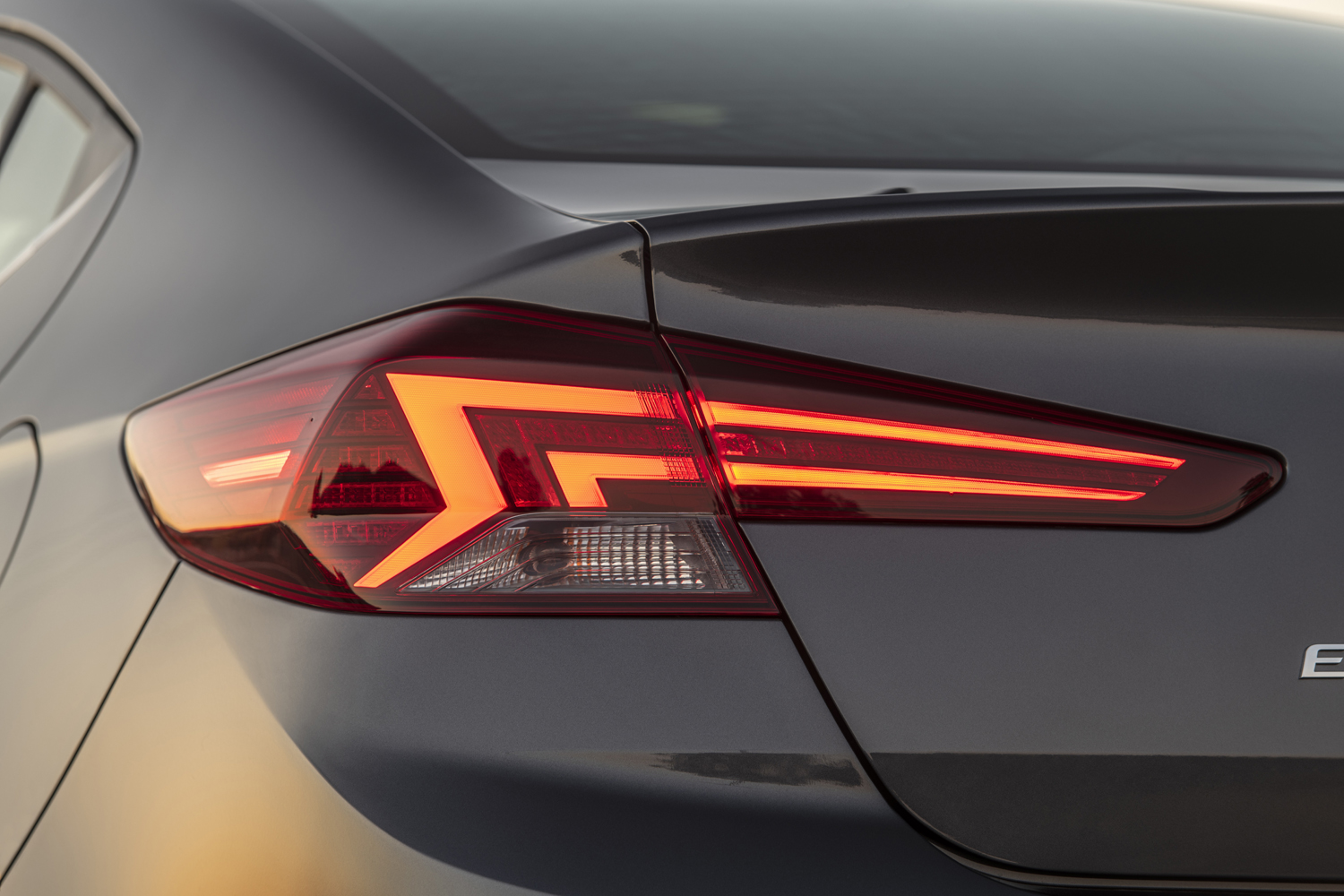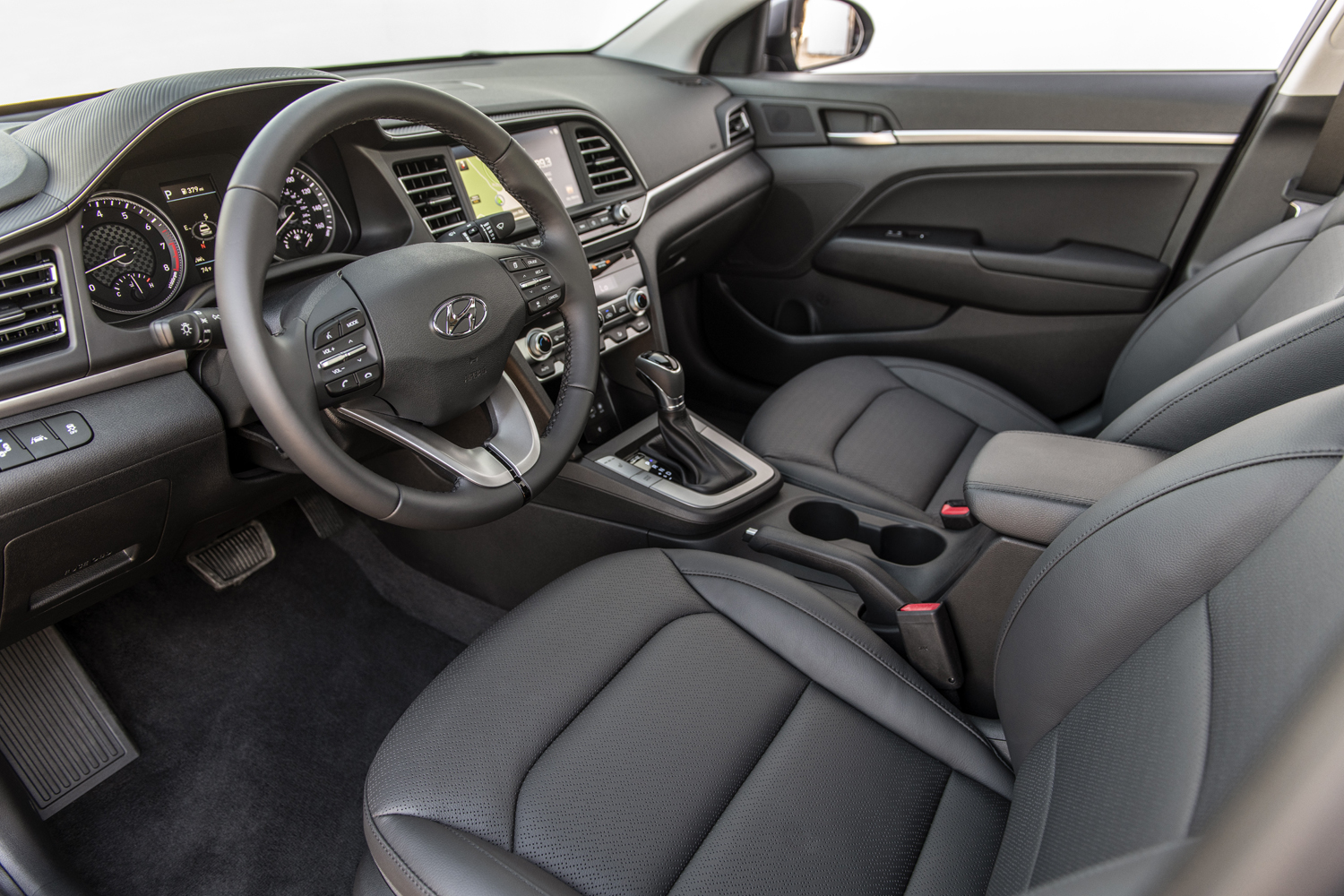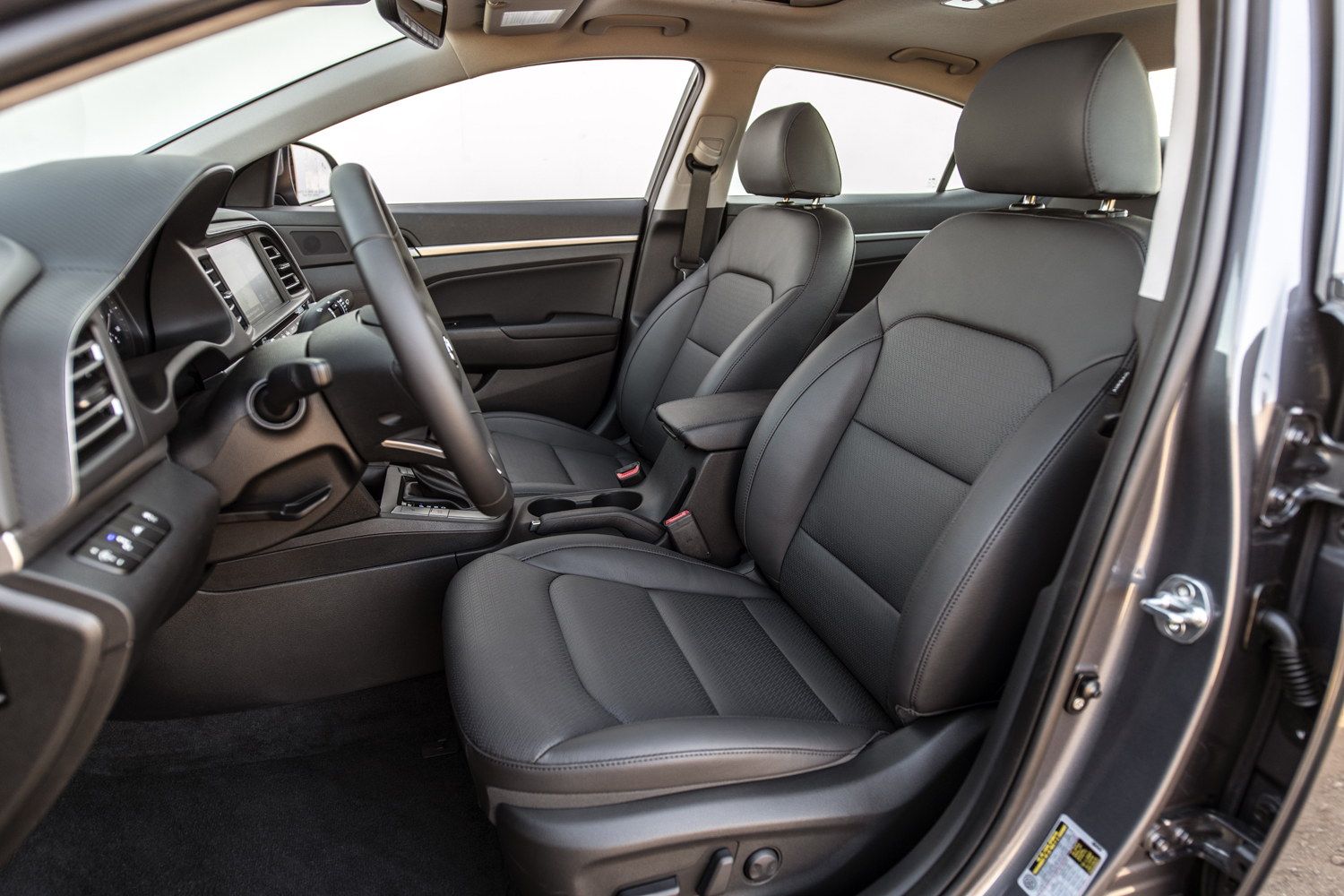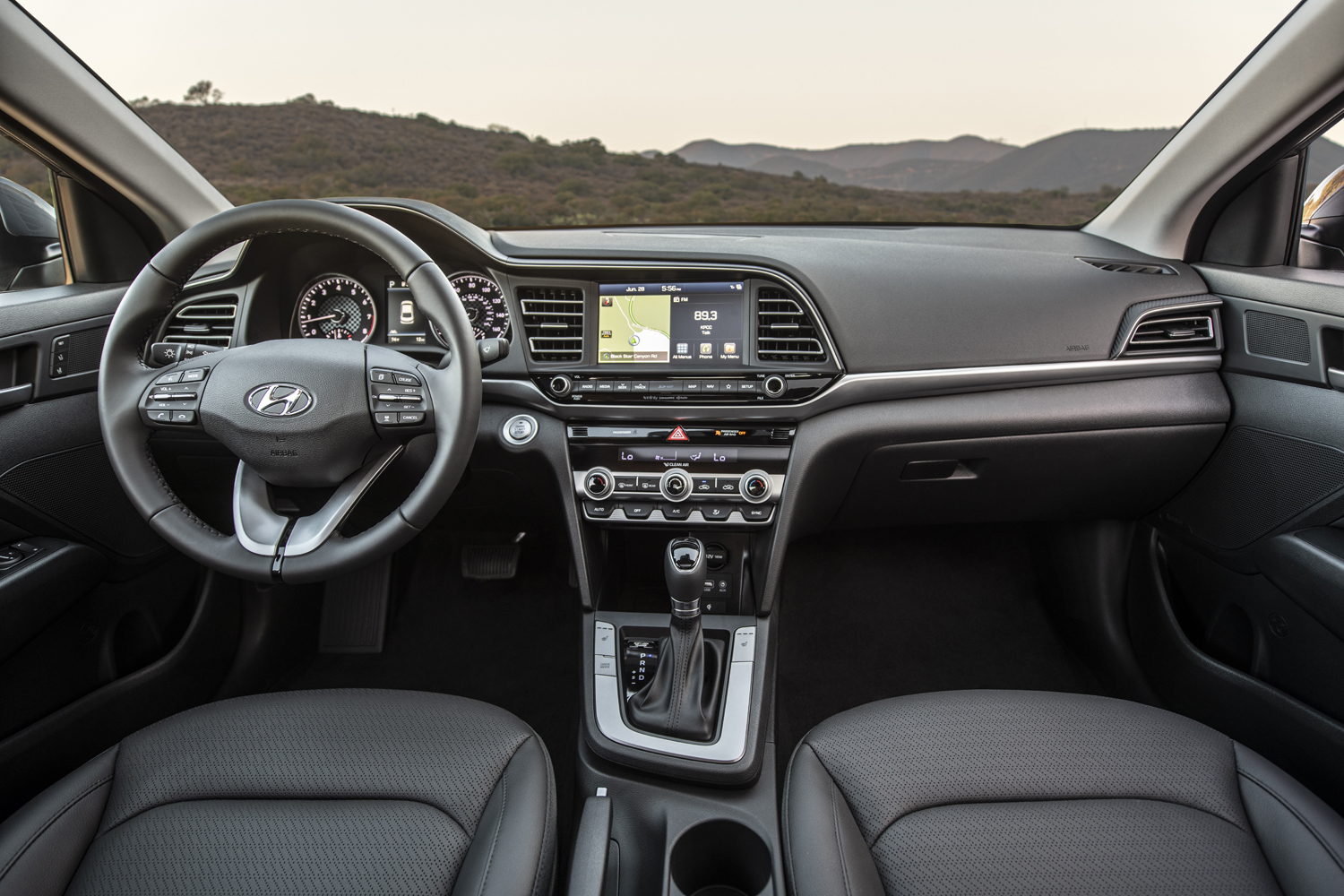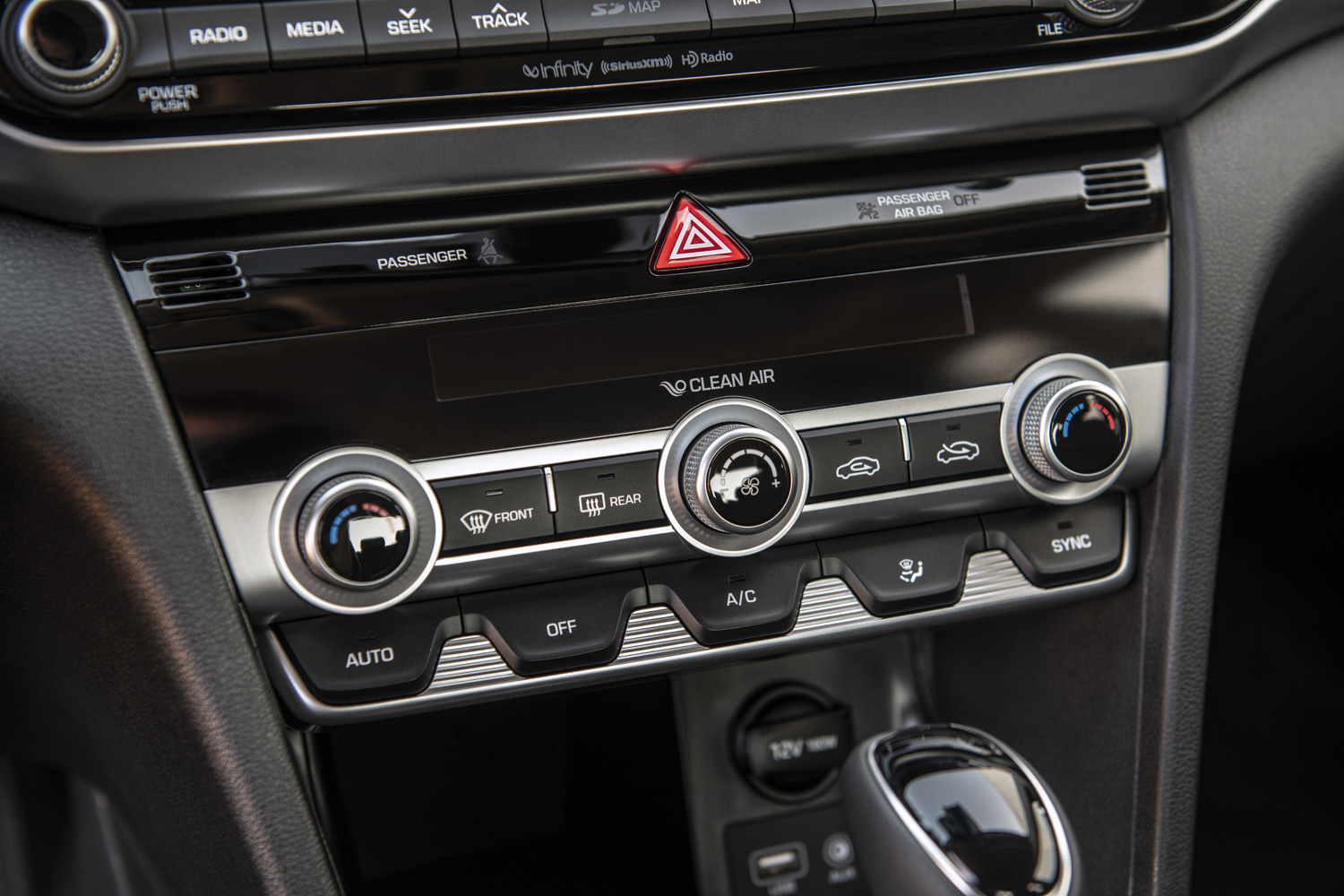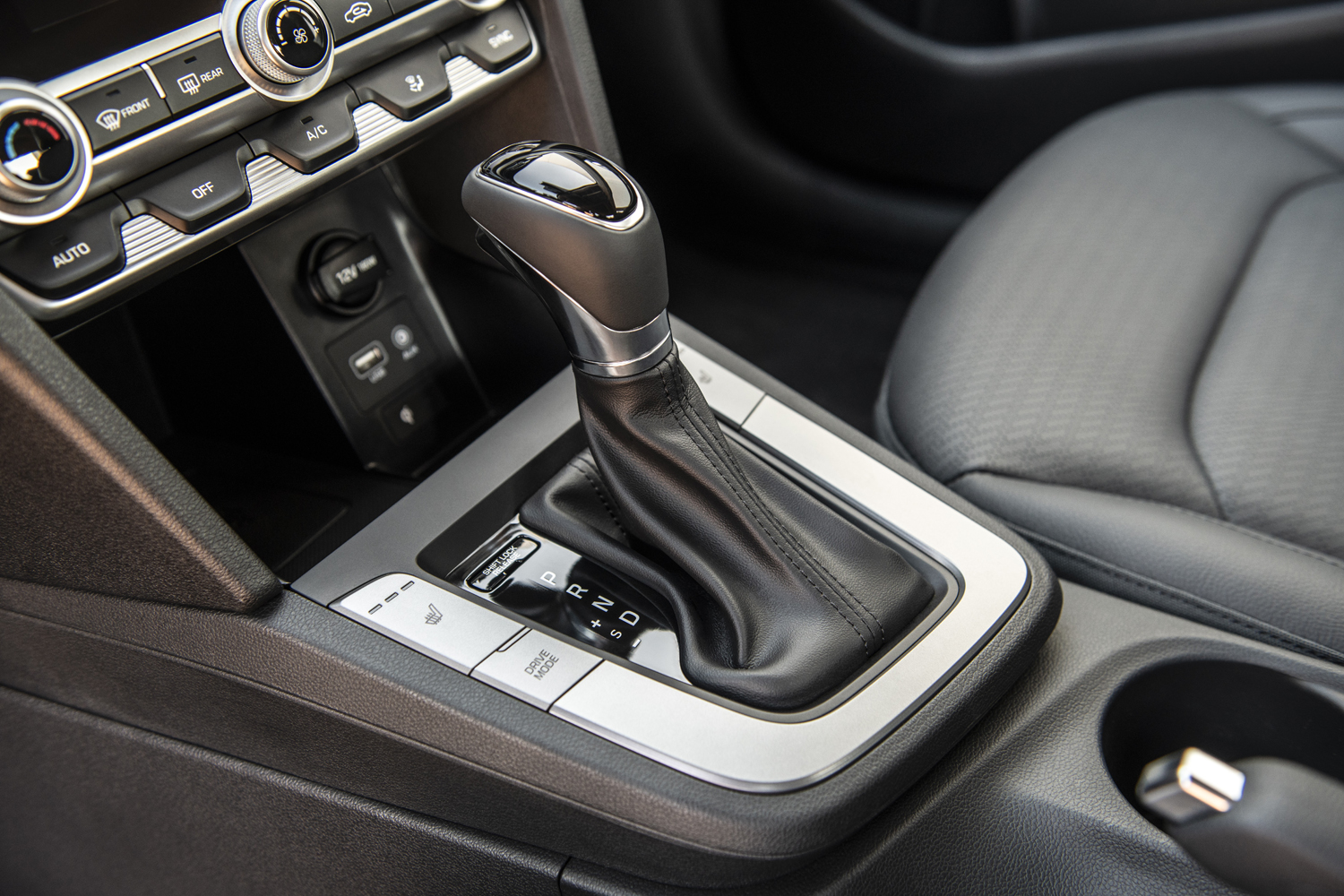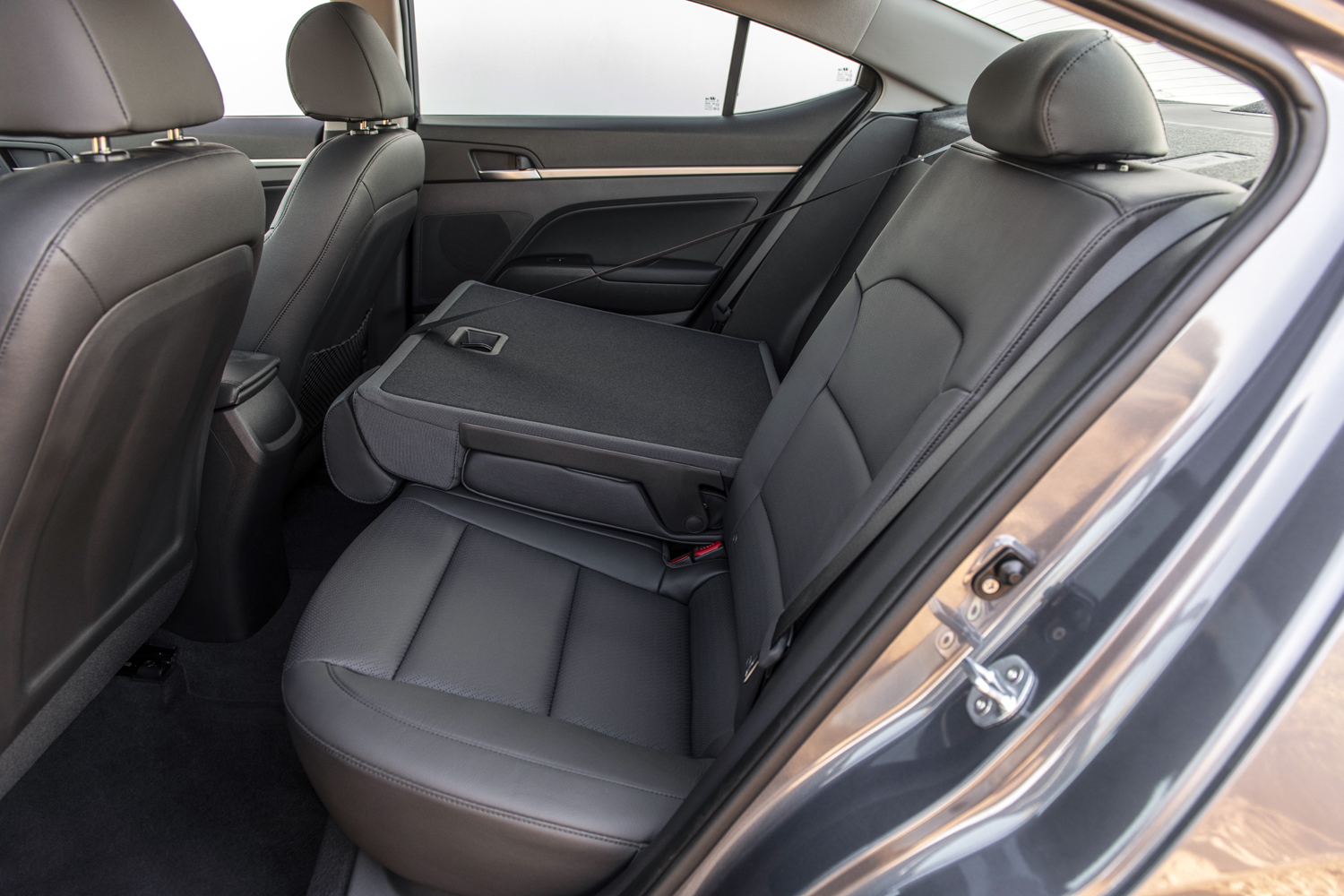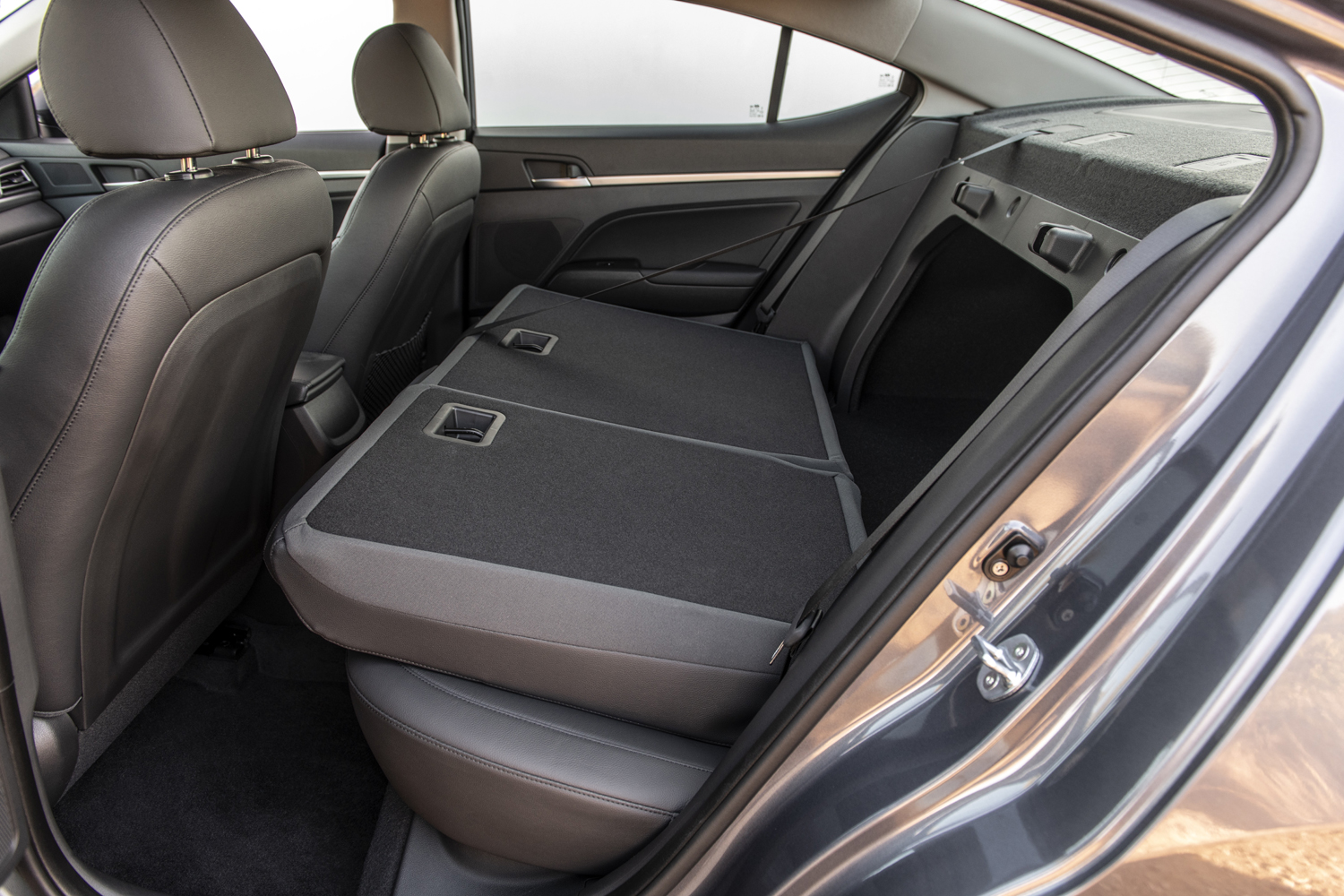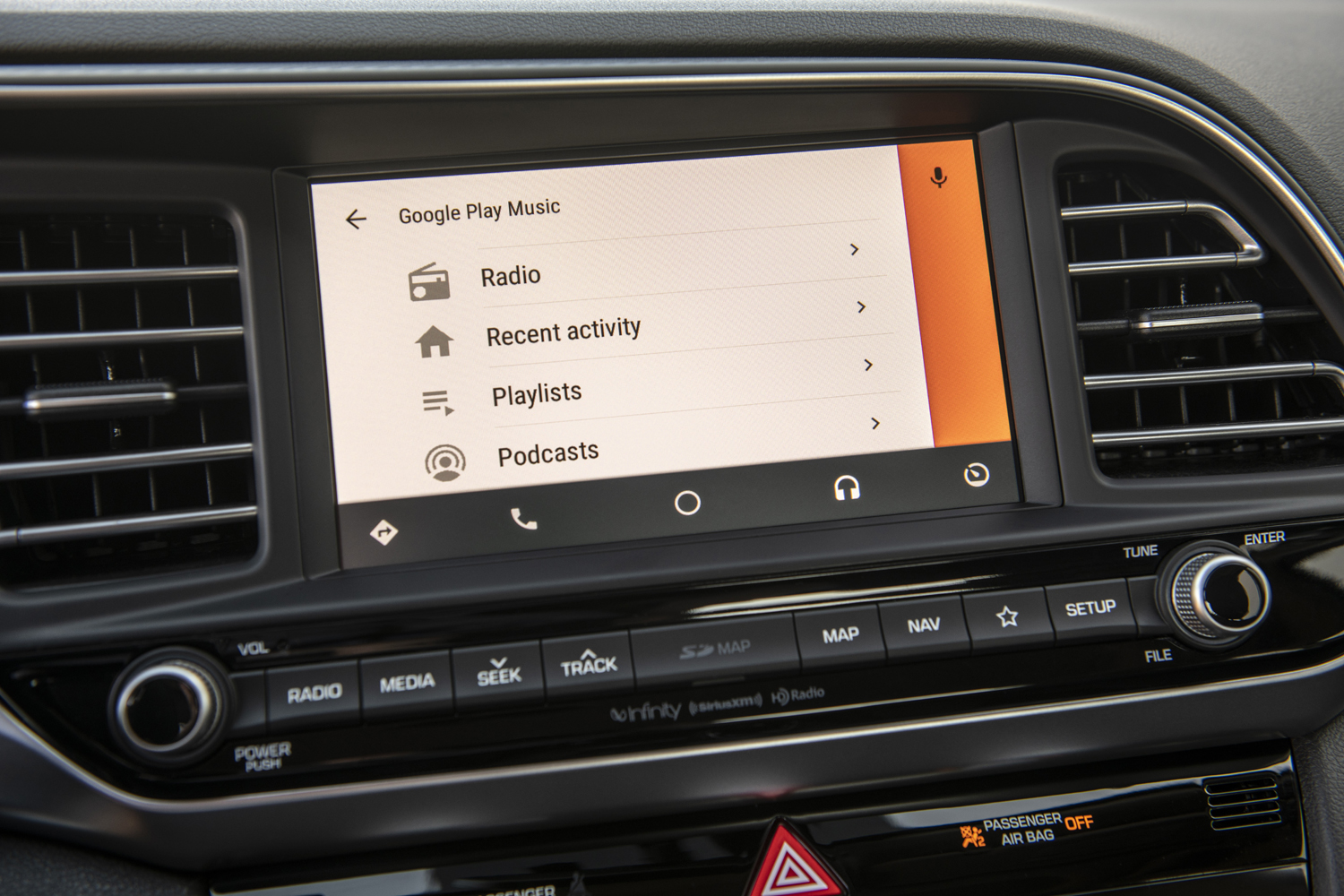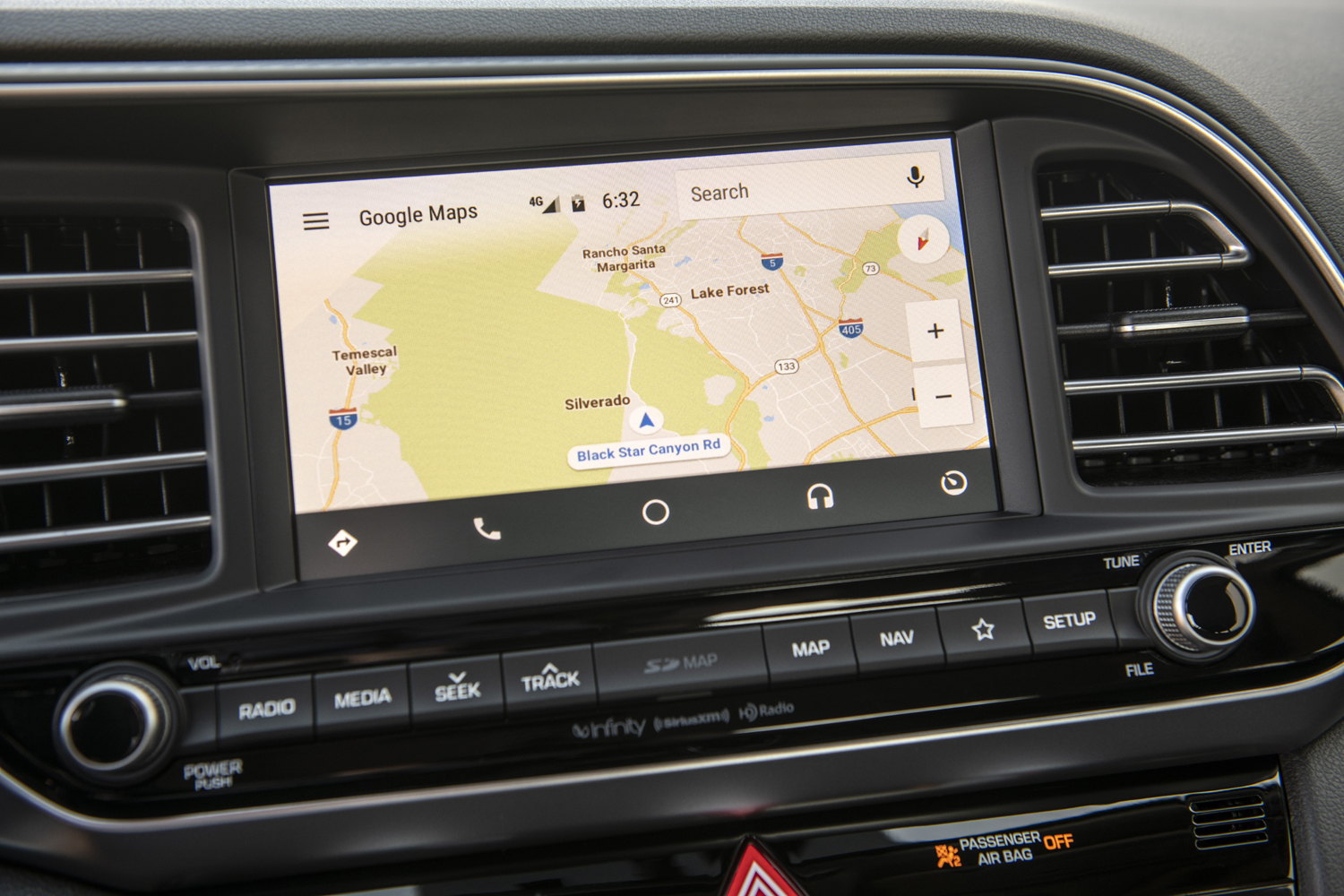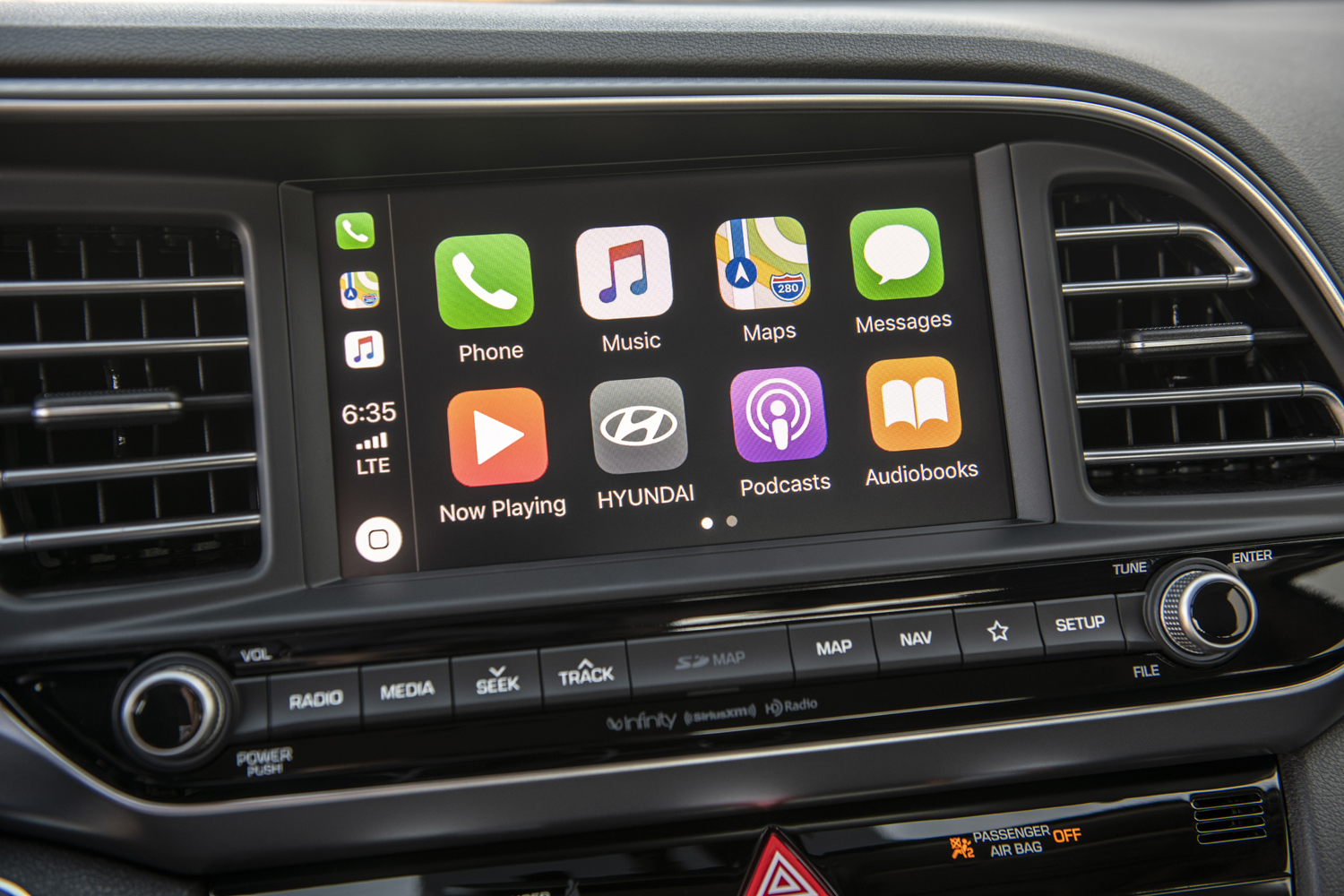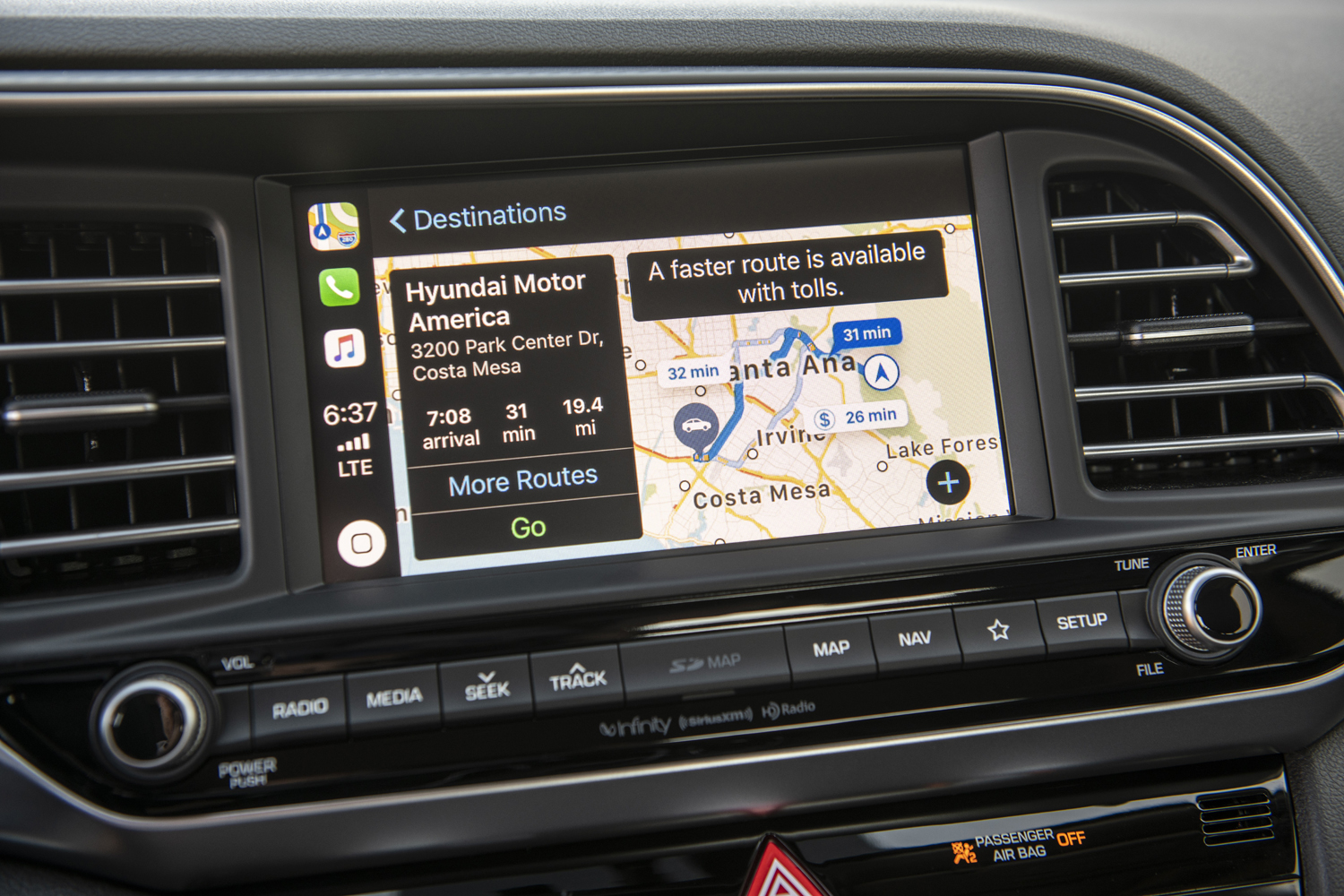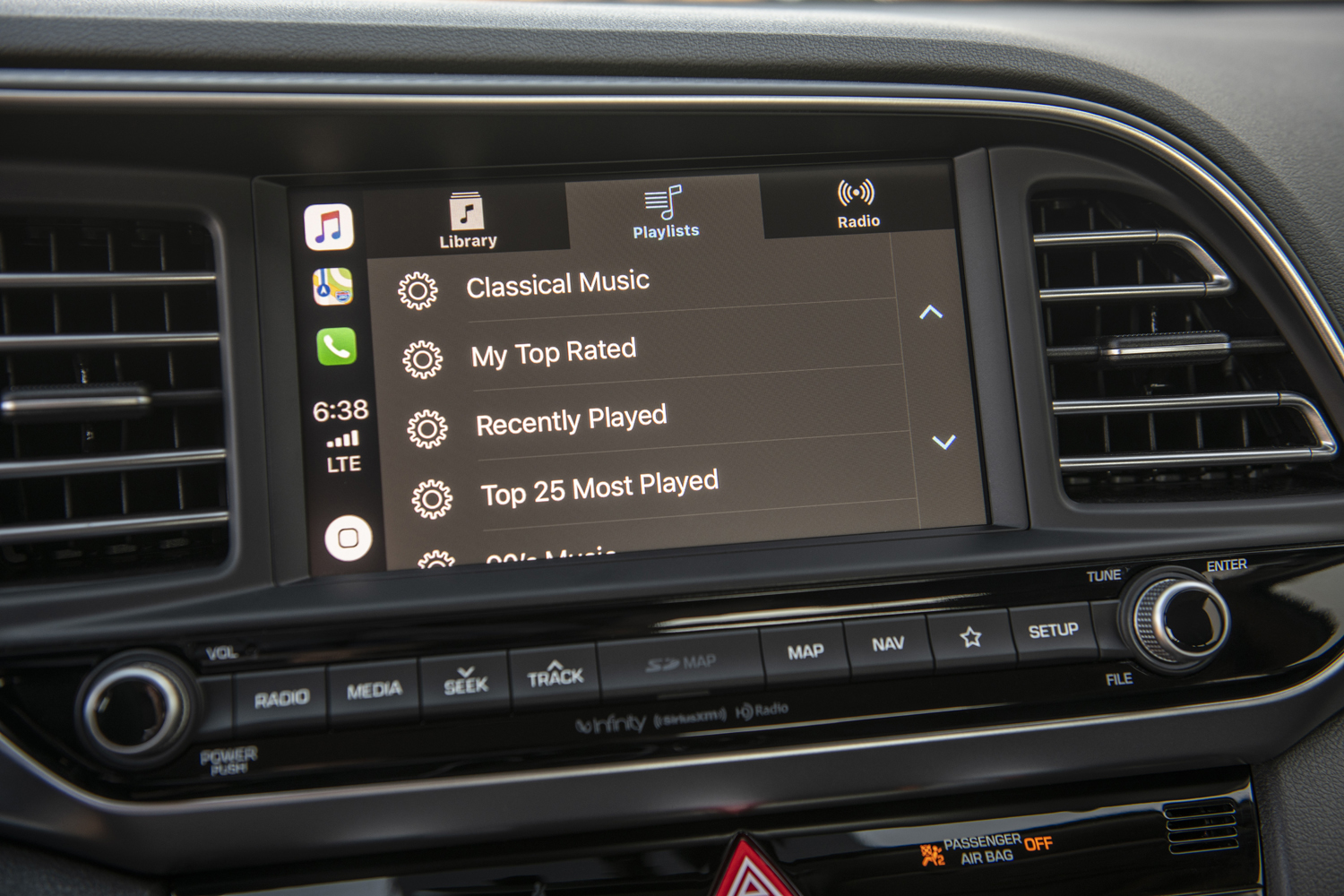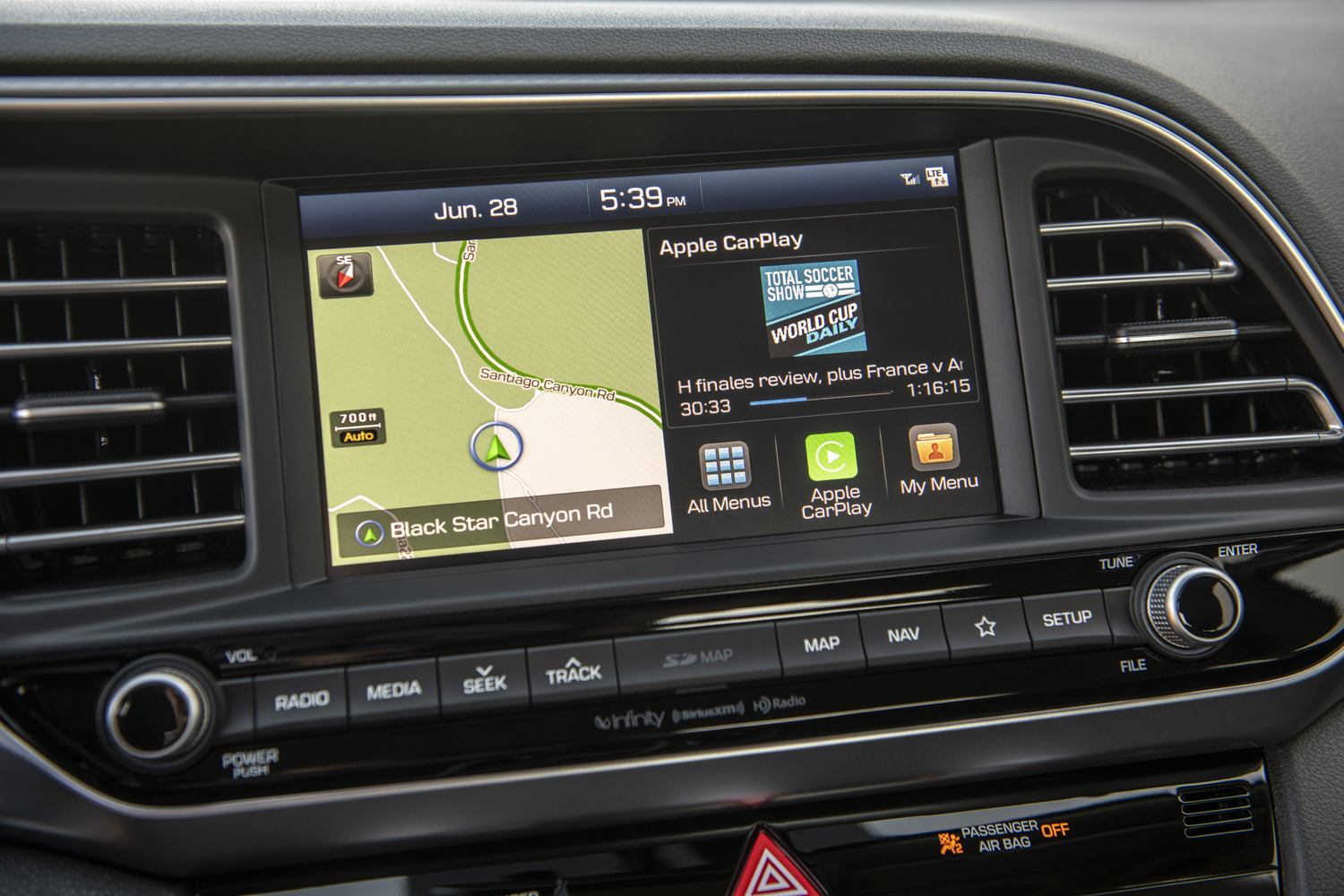There were no teaser images, no leaks, and no spy shots. Hyundai surprised us by giving the Elantra a thorough update inside and out for the 2019 model year without prior notice. The changes bring a much sharper design and more tech features to one of the firm’s most popular models.
This isn’t a minor nip and tuck hastily ordered in response to growing competition. It’s a far-reaching update that brings all-new sheet metal from the base of the windshield to the tip of the front bumper. Stylists moved the Elantra in a sharper direction by giving it a more chiseled rendition of Hyundai’s ubiquitous cascading grille flanked by large, triangular headlights with LED inserts. Triangle-shaped fog lights and ripples in the hood add a sporty touch to the design.
The middle part of the car stays the same, but the rear end gains new-look lights and a redesigned trunk lid with bold lettering below the Hyundai emblem. The license plate consequently moves down from the trunk lid to the bumper. Additional alloy wheel designs and a wider palette of paint colors round out the list of exterior updates.
Inside, the tweaks are less obvious because they’re largely tech-related. Hyundai has fitted the Elantra with the latest generation of its touchscreen-based AVN infotainment system. It’s faster than before thanks to an upgraded processor, according to the firm. Base cars display AVN on a five-inch touchscreen while more expensive variants benefit from an eight-inch unit. The Elantra also offers Apple CarPlay and Android Auto compatibility and a wireless phone charger, though adding them requires moving up in the trim hierarchy because they’re not available on the base, rental car-spec model.
2019 also brings collision avoidance with automatic braking, lane-keeping assist, and driver attention alert. Developed to make driving safer, these features come standard on every trim level with the notable exception of the base SE model. Notice a pattern?
Most Elantra models will leave the factory with a 2.0-liter four-cylinder engine under the hood. It makes 147 horsepower at 6,200 rpm and 132 pound-feet of torque at 4,500 rpm. The power travels to the front wheels through a six-speed manual transmission on base cars or a six-speed automatic on nearly every other trim level. The Elantra Eco remains the economy champ of the lineup with a smaller, 1.4-liter four that makes 128 horsepower and 156 lb-ft. of torque. It shifts through a seven-speed dual-clutch transmission. Finally, the Elantra Sport made for drivers who want to spice up their commute boasts a 201-hp 1.6-liter engine and a six-speed stick.
The 2019 Hyundai Elantra will reach showrooms before the end of 2018. It will be offered in six trim levels named SE, SEL, Value Edition, Limited, Eco, and Sport, respectively. The firm will release full pricing information in the coming months. When it arrives in showrooms, the Elantra will compete against the perennially popular Toyota Corolla, the high-tech Honda Civic, the driver-friendly Mazda3, and the all-new 2019 Volkswagen Jetta.
